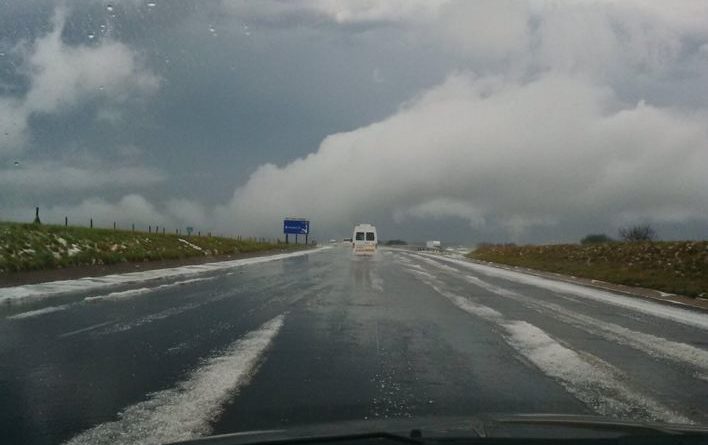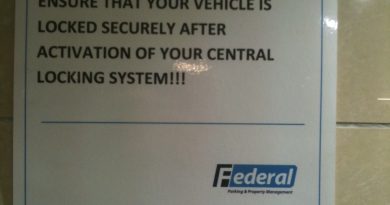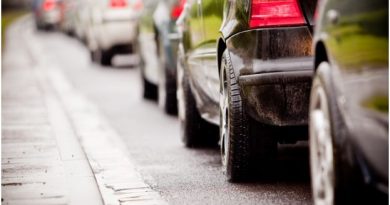Know how to Adjust driving for Safety in Bad Weather!
“Can you imagine driving along the main toll road in the Free State and there is a howling gale force wind slamming into the side of the car rocking it to and fro? Then, to make it worse, it’s actually a dust storm as well so you can barely see 10 metres in front of your car. I tell you, that’s no picnic!”
We can identify with the driver’s above description of a really dangerous driving situation. In the following sections, we are going to explore ways of how best to cope with driving under bad weather conditions.
BAD WEATHER CAUSES ACCIDENTS
Research in the US has shown that about a quarter of all accidents occur because of bad weather. Unfortunately, many of us drivers only have some idea of what to do when driving in bad weather. Because we do not experience bad weather all the time in sunny South Africa, many drivers may not be experienced in what to do when really bad weather hits our roads. What’s more, we can’t just shrug this off as we are responsible for our driving during bad weather.
WHAT IS CONSIDERED AS BAD WEATHER CONDITIONS?
Bad weather conditions are when the weather has changed to such an extent that the driver has to be extra careful and must know how to adjust his or her driving so that their driving remains safe under those conditions. The bad weather can, for instance, reduce visibility and affect the steering of the car as well as proper braking.
SOME BAD WEATHER CONDITIONS
All of us seasoned drivers have been caught in a few bad weather situations. Here are some of them1:
- Driving into the sun.
- Very cold or hot weather.
- Strong winds.
- Smoke blowing across the road, from e.g. a veld or forest fire.
- Rain pelting down.
- Hail hitting our cars.
- Snow falling as well as slippery ice on the roads.
- Fog and mist conditions.
HOW DOES BAD WEATHER AFFECT DRIVING?
- Reduced visibility, this is when you struggle to see the car in front of you.
- Steering the car feels crazy and you feel as if you are losing control of the direction you want to take.
- The car beginnings to slip and slide.
With the above in mind, it means that, if the driver is going to have to suddenly stop for any reason it will take a longer distance to stop.
WHAT THE DRIVER CAN DO TO STAY SAFE?
Drivers need to pay attention to the following issues while driving in bad weather:
· Be careful when the road surface is wet because the car can suddenly start “skiing” (hydroplaning) on the water.
· Gusty winds tug and pull at the car and this affects the steering. This applies particularly to those vehicles that offer a large surface area to the wind, such as large panel vans and caravans being towed.
· Cross-winds can suddenly “attack” your car as these winds suddenly come out into the open after being protected by high lying land on either side of the road. Such sudden bursts of wind can be particularly dangerous when crossing a bridge or a narrow mountain pass.
WHAT MUST WE LOOK OUT FOR WHILE DRIVING IN BAD WEATHER?
· In wet weather be careful when driving behind cars, especially large trucks, because the spray thrown onto your windscreen from the tyres of the car in front of you can turn visibility into a nightmare! It’s best to pull back to a safe distance. The only challenge comes when trying to overtake, as the spray can be really intense as you get closer to the vehicle. Make absolutely sure that there is no oncoming traffic when visibility is seriously reduced. Rather not overtake unless you are completely satisfied that it’s OK and safe to do so.
· When the first rains have arrived, be careful of rain water creating any slippery patches on the road due to oil and grease deposited there some time ago.
· When strong winds prevail, broken branches and other debris can be blown onto the road. You may have to swerve for some of these but also bear in mind that cars in front of you may also resort to this.
· After some heavy rain, potholes are likely to be filled with water which means that you won’t see them as easily. Hitting a huge pothole can prove to be really serious and dangerous.
· Be aware of pedestrians, people on bicycles and motorcyclists and be prepared to give them extra berth.
· Animals may stray onto the road if any fences have been destroyed.
· Smoke from fires and dust storms can suddenly reduce visibility.
· Driving in fog is probably one of the most dangerous things you can do.
· Many vehicles in South Africa are not roadworthy. An example is when cars have no head-lights. When the road visibility is poor it would be safer to avoid overtaking rather than possibly being faced with a car that has no head-lights in the oncoming traffic lane that you didn’t expect or see due to the poor visibility conditions.
· Under snowy conditions, slow down and beware of black ice on the road surface. The road surface can be particularly slippery in these situations so it is best to avoid tailgating and going through corners too fast.
MAKE SURE BEFORE YOU START TO DRIVE IN BAD WEATHER
If you have a choice not to drive in bad weather, then don’t. Obviously, if it is urgent that you do, then be very cautious and drive slowly so that you have enough time to react in any bad situation. If the weather gets really bad, try and find a spot to stop that is reasonably far away from the roadside itself because the last thing you want is to have someone crashing into your stationary vehicle. Remember “mother nature” can be very powerful and unpredictable and so even if you have the most powerful car and you are very experienced in driving, it may still be best to rather stay at home.
ARE YOU ACTUALLY FIT ENOUGH TO DRIVE IN BAD WEATHER?
Bad weather means that it will place a great demand on your driving experience. So there are the following to consider:
· Those who can’t see too clearly, should not attempt to drive in poor visibility. (The story once told is that a motorist was held up at a road block and the traffic officer asked if the driver could please tell him what information was displayed on the road sign lying ahead. The spectacled driver responded “What road sign, where?”)
· You need to concentrate on the changing road conditions, so the last thing you want is to be distracted by loud music or noisy passengers. What will happen if there is a siren going off from a police car or ambulance that is trying to overtake you and you can’t hear it?
· To avoid falling asleep at the wheel, keep fresh air blowing into your face.
· Finally, don’t start to drive while you are still tired – in bad weather, you’ll need all the alertness you can muster.
THE CONDITION OF YOUR CAR IN BAD WEATHER
Before you leave, just have a good look at your car before leaving:
· Check the tyres (including the spare tyre). In bad weather conditions especially the tyre tread is extremely important – good deep treads can quickly dispel water lying on the road surface and help potentially avoid the dangerous scenario of hydroplaning.
· Tyres that are either too soft or too hard can result in dangerous driving.
· Check all engine fluids as well as making sure the vehicle has sufficient petrol for the trip.
· Make sure that the wiper blades are working as they should as you need to be able to see while it’s raining.
· Make sure all the lights are working as they should. In rainy weather, the inside of the windscreen can mist up rather quickly and so the aircon must be able to clear this away too. Ensure the aircon settings don’t need too much attention while you drive. In hot weather, be particularly attentive of all your gauges displayed on the dashboard to avoid the car overheating.
Advice for Safe Driving in Bad Weather Conditions https://t.co/MrQuAUBhGL #ArriveAlive @KenyanTraffic pic.twitter.com/e4NLoPVlk7
— Arrive Alive (@_ArriveAlive) September 4, 2017
Disclaimer:
This article was prepared by Eric Sandmann in his personal capacity. The views and opinions expressed in this article are the author’s own and do not reflect the views and opinions of Prime Meridian Direct (Pty) Ltd, FSP41040.The views and opinions in the article should not be attributed to anyone but the author unless expressly stated. Nothing in this article should be relied upon as advice, this publication is presented for informational purposes only. No person should act or refrain from acting in reliance on any information found in this article, without first obtaining proper financial advice from the appropriate professional. The author makes no claims, promises or guarantees about the accuracy, or completeness, of any information linked from, referred to, or contained in this article. The author reserves the right, to edit and change the content of this article.




